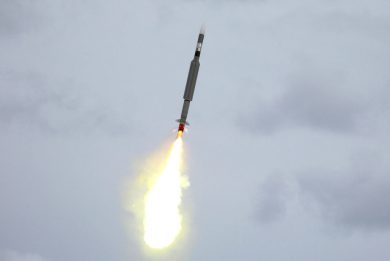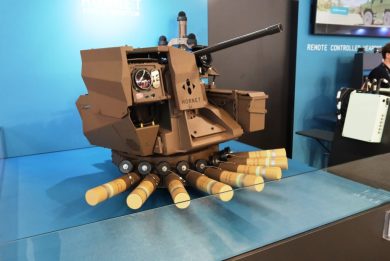
PAS 2025 – MBDA details its new VSHORAD missile named Fulgur
A new missile will soon fill a gap in the lower tier of MBDA’s air defence missiles portfolio: the Fulgur. Known until now with the generic appellation VSHORAD, which indicates its category, the name of the new missile was announced on Day 1 of the Paris air show, the company detailing its characteristics and the development timeline

“The Ukrainian conflict changed paradigms in terms of the intensity with which very short range air defence missiles, VSHORADs in short, are used, reducing to nil stocks,” Lorenzo Mariani, Managing Director of MBDA Italia and Executive Group Director Sales & Business Development, told EDR On-Line a few hours after the opening of the 55th edition of the Paris Air Show.
Considering shoulder-launched VSHORAD missiles, usually defined as MANPADS (Man-portable air defense systems), in western countries there is not much choice, and even if production capacities were increased, Italian Armed Forces became aware of the need for the country to have a design authority and industrial production capacity. This led MBDA to launch in 2023 a study programme, which led today to the Fulgur, the name of the new product being unveiled at the presence of the Italian Army Chief of Staff, Lt.Gen. Carmine Masiello.

The study was finalised at great speed, leading to a weapon in the same category of the Stinger missile, “but with improved performances, as it is a newly designed product,” Mariani underlines. The name Fulgur, lighting in Latin, recalling the speed, the manoeuvrability, the agility of use of the new weapon system. With a mass of around 10 kg, it is 1.5 metres long, has a diameter of 70 mm, and a range of 5 km, reaching its target in a very short time as it flies at supersonic speed. The missile will be fitted with a new generation electro optical sensor, an imaging infrared one EDR On-Line understood, which is being developed in cooperation between Leonardo and MBDA, the latter providing the algorithms. MBDA also designed the warhead, which will be produced by a third party. The rocket motor will be provided by AvioAero.
In the shoulder-launched configuration the system is made of the missile itself, in its launch tube fitted with a gripstock to which an electro-optic sensor is fitted to facilitate target acquisition, as well as a processing unit and an IFF. The missile mock-up was showcased in Paris, but not the complete system. A vehicle mounted configuration will also be available, in the form of a remotely controlled turret with four ready-to-fire missiles, hosting the same modules of the shoulder-launched system. It could be installed over a light armoured vehicle, and could also be employed on the move, according to MBDA.
Typical targets for this category of weapon systems are fighters, helicopters, unmanned air vehicles, and subsonic cruise missiles.

“We developed this programme at great speed,” Lorenzo Mariani told EDR On-Line, “and we already signed a first production contract that will lead to full industrialisation. The Preliminary Design Review step has already been overcome, which brought us to the detailed design and in a short time to the Critical Design Review,” when the configuration will be nearly frozen. When dealing with shoulder-launched missiles safety issues are of foremost importance, and will be critical in the qualification process, the MBDA Italia managing director explains, telling us that a first live-fire launch is expected within 2028.
One of the main issues that led to the development of the Fulgur was production capacity. Initially the target was set in the order of some hundred per year. “However, when NATO staff targets were reconsidered, these numbers were increased by one order of magnitude,” Mariani stated, which means that now production capacity has increased to four digits, which will dictate the industrial model. EDR On-Line understood that the most critical parts will be produced in the Fusaro facility, close to Naples, the seekers house of MBDA Italia, while the assembly facility, where all energetic elements such as the rocket motor and the warhead will converge, was not announced.
Currently MBDA Italia has concentrated the Aster production in Aulla, close to La Spezia,where the capacity has been considerably increased, while a new assembly plant in Noceto, close to Piacenza, is under development, where the CAMM-ER will be assembled. “Here production will start in 2026, with a few dozens, a number that sill soon reach three digits,” Mariani concluded.

Back t the Fulgur, this category of missile is often used in an air-to-air configuration on combat helicopters. The MBDA Italia MD confirmed that discussions are ongoing with Leonardo on the integration of the Fulgur on the AW249, the new Italian Army Aviation combat helicopter, and a mock up of the new MBDA missile was showcased, together with other possible solutions, alongside the fourth prototype of the Fenice (Phoenix), the successor of the AW129 Mangusta. MBDA Italia obviously looking at the export market for its new missile in the MANPADS, vehicle-mounted and air-launched configurations.
Photos by P. Valpolini



